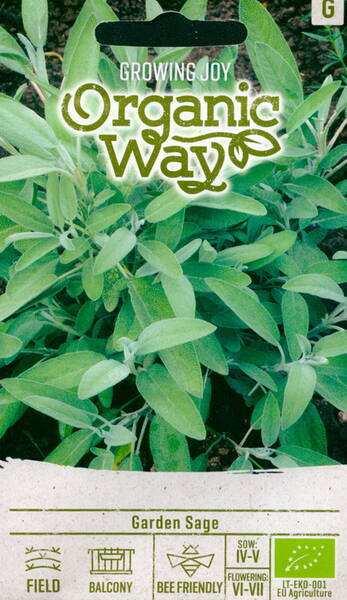In much more recent history, Sage has become the king among all culinary herbs and is usedfor meat, cheese and egg dishes, as well as soups. Sage is very easily started from seed.
Crops in: 90 Days
Height: 18 inches
Position: Full Sun
Hardiness Rating: 5 6 7 8
Description: Ideal for rich foods plus traditional sage and onion stuffing with duck and goose. A useful gargle for sore throats. And dont forget that it also looks great in the perennial border.
Companion Plant: Reputed to ward off carrot fly planted next to carrots. With cabbage said to improve their flavour and digestibility and to repel Cabbage Moth and Cabbage White Butterfly.
Sowing Instructions: Sow in early spring in good free draining seed compost, just covering the seed. Germination usually takes 10-21 days at +21+24°C.
Growing Instructions: When seedlings are large enough to handle transplant into 8 cm pots, grow cool and finally plant out 38 cm apart into a sunny spot in free draining soil.
Aftercare Instructions: For best results, provide any well-drained soil in full sun, however try to avoid acidic soils. The flavour of the leaves will be best in warm, dry conditions. To keep plants bushy, prune in spring to encourage new shoots with strong flavour. Harvest leaves as and when required once plants are well grown.
Eng.: Garden Sage, Culinary Sage, Common Sage, Kitchen sage, Broadleaf sage, Dalmatian sage.












